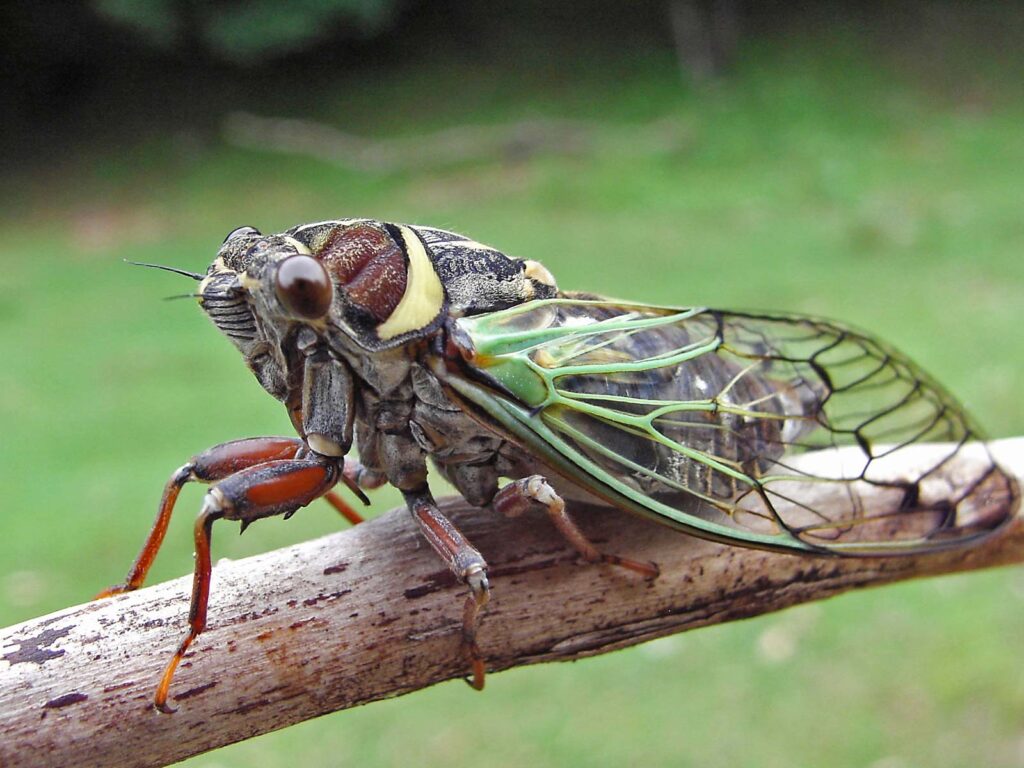
Have you ever heard a loud buzzing sound in the trees on a hot summer day? It’s probably a cicada! Cicadas are insects that are known for their loud songs. They are also very colorful, with bright green or brown bodies and large, transparent wings. These insects are related to grasshoppers and crickets.
Cicadas have a very interesting life cycle. They spend most of their lives underground as nymphs. Nymphs are young cicadas that look like little white worms. They eat tree roots and grow very slowly. They stay underground for 2-17 years, depending on the species, before emerging from the ground. They climb up trees and molt (shed their skin). Once they have molted, they are adult cicadas. You might find their exoskeletons in your garden, they are interesting to collect and study.
Adult cicadas have a very short lifespan, only about two weeks. They spend most of their time singing and mating. Male cicadas sing to attract females. The louder their song, the more attractive they are to females. They sing using a special organ called a tymbal. Tymbals are located on the sides of the cicada’s abdomen. When the cicada contracts its muscles, the tymbals vibrate and produce a loud sound.
Cicadas are important members of the ecosystem. They help aerate the soil, pollinate trees and shrubs, and they are a food source for birds and other animals.
Fun facts:
- Cicadas can sing at a volume of up to 100 decibels! That’s as loud as a lawnmower!
- Cicadas have the largest eyes of any insect.
- Cicadas have two pairs of wings, but they only use the front pair to fly. They use their back wings to balance.
- Cicadas can fly up to 20 miles per hour.
Next time you hear a cicada singing, take a moment to appreciate this amazing insect!
